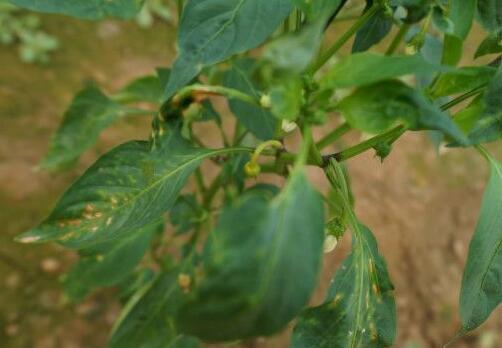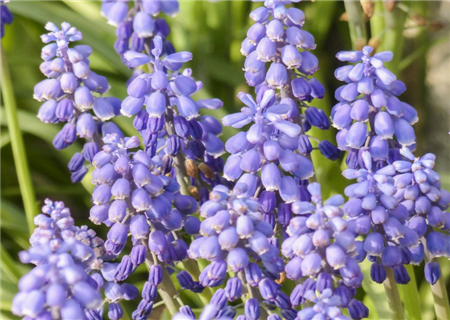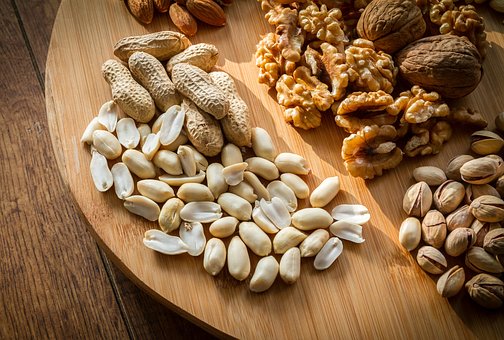Identification of plant abiotic pathogens and their resulting diseases (physiological diseases)
Identification of plant abiotic pathogens and their resulting diseases (physiological diseases)? In the process of plant growth and development, unsuitable physical factors, chemical factors and air pollution, pesticide toxicity and plant physiological defects or genetic diseases will lead to abiotic diseases. This kind of disease has no infection process and can not be transmitted to each other, which is called non-infectious disease or physiological disease.

1. Malnutrition
Malnutrition includes lack of nutrition, imbalance between various nutrients, or overnutrition, which can induce plants to show various symptoms. There are many reasons for the lack of plant nutrient elements, one is the lack of nutrient elements in the soil, the second is the improper proportion of nutrient elements in soil, the antagonism between elements affects plant absorption, and the third is the discomfort of soil physical properties, such as too low temperature, too little water, too high or too low pH, etc., all affect the absorption of nutrient elements by plants. In the land where a large number of chemical fertilizers and pesticides are applied, and in the case of frequent protected cultivation of continuous cropping, the imbalance of a large number of elements and trace elements in the soil has become increasingly prominent, and crops growing in this soil environment often show symptoms of malnutrition. The high content of some nutrient elements in soil is also disadvantageous to plant growth and development, and can even cause serious damage.
II. Environmental pollution
Environmental pollution mainly refers to the pollution of air, water, soil and acid rain. These pollutants do different harm to different plants and cause different symptoms.
III. Drug damage
When applying chemical pesticides on plants, plants can be harmed by improper selection, unreasonable application method, inappropriate application period, high concentration and so on.
Prevention and control methods:
1. Spray lotion: if the damage caused by spraying liquid on leaves and plants is found early, and when the solution is not completely infiltrated or absorbed into the plant, you can quickly spray the damaged plant with a large amount of water and spray it repeatedly for 3-4 times. wash the medicine off the surface of the plant as much as possible. 0.2% alkali noodle or 0.5% lime water can also be added to the sprayed water. At present, most pesticides are acidic, and the decomposition of alkaline substances can be reduced, so the decomposition of pesticides can be accelerated.
two。 Drainage and irrigation water to reduce drug residues: for the drug damage caused by some poisonous soil and some herbicides, proper irrigation and drainage or a series of irrigation washing drugs can reduce the degree of drug damage.
3. The content of Zhuangyuanjia is 0.5%, which is generally diluted 500 times plus white sugar plus vinegar and mixed with 30 jin of water, which has the effect of immunity, rejuvenation, disease resistance, yield increase, drug resistance and anti-freezing injury on crops.
IV. Fertilizer damage
Improper application of chemical fertilizer or improper application method will often lead to fertilizer damage. Dehydrated fertilizer damage is due to excessive application of chemical fertilizer at one time, or excessive concentration of fertilizer solution due to lack of soil water after fertilization, causing reverse osmosis of water in crop cells, resulting in crop dehydration, wilting, like frost or hot water, light cases affect growth and development, heavy cases die. Fumigation fertilizer injury is the application of ammonia water, ammonium bicarbonate and other fertilizers when the temperature is high, resulting in a large amount of ammonia damage to crops, light, yellowing of the lower leaf tip of the plant, affecting growth and development, and death of the whole plant. Seed burning fertilizer damage is caused by excessive application of seed fertilizer, or seed burning caused by seed dressing with calcium superphosphate, volatile ammonium bicarbonate, urea, lime nitrogen and other chemical fertilizers, which can lead to lack of seedlings. In addition, in foliar fertilization, the concentration used is too high, which will also cause leaf burns.
Solution:
1. Watering to reduce damage: at the initial stage of fertilizer damage, 2 buckets of bacon were flushed with water immediately to promote the infiltration of salts and fertilizers remaining in the soil tillage layer, reduce their concentration in the soil gap, and reduce their continued effects on plant roots.
two。 Root irrigation treatment: use 4 bottles of bacon and 1 bottle of Lvjian to stimulate the growth of roots, which can quickly restore the growth of plants and alleviate the phenomenon of burning roots and seedlings. In addition, the amino acids contained in them can be quickly absorbed and utilized by roots to alleviate the nutritional deficiency caused by root burning and strengthen the growth of plants.
5. Imbalance of water supply
In the case of long-term insufficient water supply, the vegetative growth of plants is inhibited, and the volume, quality and quality of various organs are reduced, resulting in short and weak plants. When the water shortage is serious, it can cause plant wilting, leaf edge scorching and other symptoms, resulting in fallen leaves, flowers and fruits, and even the whole plant withered and withered.
Too much soil moisture will affect the increase of soil temperature and soil ventilation, weaken the root activity of plants, even be poisoned, cause rotten roots, plant growth is slow, lower leaves turn yellow and droop, flowers and fruits fall, and seriously lead to plant death. When the water supply is uneven or changes violently, it can cause the cracking of root vegetables, cabbage and tomato fruit, or cause cucumber to form deformed melon, tomato navel rot and so on.
VI. The temperature is too high or too low
High temperature can rapidly weaken photosynthesis, enhance respiration, reduce sugar accumulation, slow down growth, and sometimes dwarf and mature plants earlier. The high temperature often burns the stems, leaves, fruits and other tissues of plants. The ventilation and heat dissipation of protected cultivation is not timely, and it often causes high temperature injury. High temperature and drought often lead to a large number of fallen leaves, flowers and fruits of hot pepper.
Low temperature is also very harmful to plants. The disease caused by low temperature above 0 ℃ is called chilling injury. Some thermophilic plants and plants cultivated in tropics, subtropics and protected areas are vulnerable to chilling injury. When the air temperature is below 10 ℃, common chilling injury symptoms such as discoloration, necrosis and surface spots will appear, and budding and top withering will appear on woody plants. Plants encounter a long period of low temperature during flowering, which will also affect fruiting. The plant disease caused by low temperature below 0 ℃ is called freezing injury, which is mainly caused by water-stained dark brown spots on young stems or leaves, then the tissue dies gradually, and in severe cases, the whole plant turns black, withered and dies. Too low soil temperature often leads to poor root growth of seedlings, causing melons and other crop seedlings "retting roots (300 times of bacon + 300 times of Lujian irrigating roots)", which is easy to be infected by rhizosphere pathogens.
The effect of drastic temperature change on plants is often greater than that of simple high and low temperature. If the temperature difference between day and night is too large, the branches of woody plants can be burned or cracked by frost. this symptom is common on the sunny side of the tree trunk.
7. Discomfort in lighting
Lack of light usually leads to overgrowth of plants, affecting the formation of chlorophyll and photosynthesis, resulting in plant yellowing, fragile plant tissue, lodging and pathogen infection.
Zhongtian brand new energy-saving plant growth lamp is a special wave light, which is composed of four colors, red, yellow, blue and green. These lights are just suitable for the absorption of plant photosynthesis, and the plant growth lamp adopts mature energy-saving lamp technology. a large number of experimental results show that under the condition of guaranteed temperature in greenhouse, it can promote plant photosynthesis and achieve the purpose of increasing production and income. therefore, the energy-saving plant growth lamp is an indispensable light supplement equipment in off-season cultivation.
Excessive light is often combined with high temperature and drought, causing sunburn and leaf burn.
The length of light is not suitable, but also can delay or advance the flowering and fruiting of plants with long or short days, and even cause plants not to blossom and bear fruit, resulting in serious losses to production.
Non-infectious diseases often lead to the decline of plant growth and disease resistance, which is also the cause of infectious diseases. Infectious diseases are caused by the infection of pathogens, which reduces the stress resistance of plants. When the environment changes sharply, non-infectious diseases are easy to occur.
Time: 2019-04-07 Click:
- Prev

Can hyacinth be kept in the bedroom? How to fertilize and absorb the best? (with culture method)
Hyacinth has a unique shape and is the first bouquet that many friends will choose to buy. Shaped like garlic before flowering, it is native to the Mediterranean coast and Asia minor. It is one of the most fragrant flowering plants found in the study. So can hyacinth be kept in the bedroom? How to apply fertilizer and absorb hyacinth is the best.
- Next

How to preserve the peanuts of "everlasting fruit"? Can you still eat when there are worms? Did you eat to nourish your stomach?
In life, many people like to eat peanuts, especially in summer, many people will prepare a plate of peanuts and a bottle of wine to eat together, but because peanuts are not resistant to storage, especially insects will sprout after a long time, how can raw peanuts be preserved? Can you still eat when there are worms? Did you eat to nourish your stomach? How to keep raw peanuts?
Related
- Fuxing push coffee new agricultural production and marketing class: lack of small-scale processing plants
- Jujube rice field leisure farm deep ploughing Yilan for five years to create a space for organic food and play
- Nongyu Farm-A trial of organic papaya for brave women with advanced technology
- Four points for attention in the prevention and control of diseases and insect pests of edible fungi
- How to add nutrient solution to Edible Fungi
- Is there any good way to control edible fungus mites?
- Open Inoculation Technology of Edible Fungi
- Is there any clever way to use fertilizer for edible fungus in winter?
- What agents are used to kill the pathogens of edible fungi in the mushroom shed?
- Rapid drying of Edible Fungi

